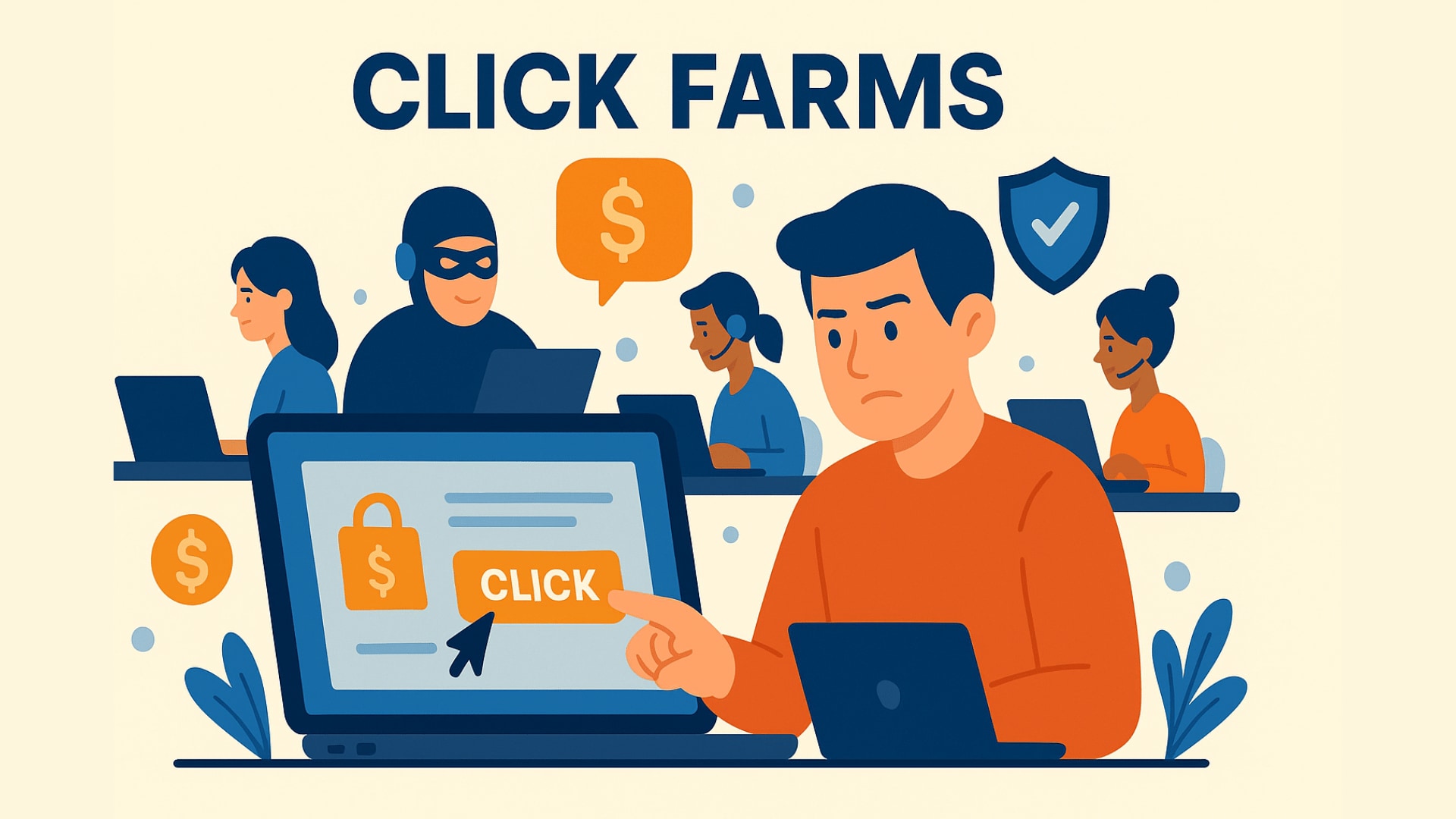
In the crowded world of online advertising, clicks, views, and likes often serve as currency. But not every click comes from a real person. Behind many seemingly successful campaigns may lurk a quiet saboteur: the click farm. These operations, while invisible to most users, can skew marketing metrics, exhaust advertising budgets, and weaken trust in data. If you’re running digital campaigns, understanding click farms is no longer optional — it’s essential.
Table of contents
What Are Click Farms and How Do They Work?
Click farms are organised operations that generate fake engagement metrics. This is done either through low-paid human workers or through sophisticated bots designed to mimic real user behaviour. Whether operated from cramped offices packed with smartphones or from remote servers running emulated devices, click farms exist to deceive.
The engagement they manufacture includes ad clicks, social media likes, shares, followers, and even fake reviews. These metrics are artificially inflated to give the illusion of popularity, success, or audience engagement. To avoid detection, click farms often rely on VPNs, proxy servers, and distributed IP addresses to make activity appear diverse and geographically legitimate.
Some click farms operate with human labor in countries with lower wage standards, where workers are paid small sums to click, scroll, or tap their way through various digital interfaces. Others are run entirely by bots, capable of executing thousands of interactions per minute. The most resilient and dangerous farms combine both methods, creating hybrid systems that evade basic fraud detection mechanisms.
Why Click Farms Exist and Who Uses Them
The purpose behind click farms varies, but the common thread is manipulation — of platforms, of users, and of performance data. Fraudsters use click farms to earn revenue from PPC (pay-per-click) ads. Social media influencers may buy likes and followers to appear more popular than they are. Even businesses sometimes resort to these tactics to boost their online presence or sabotage competitors by draining their ad budgets.
Click farms can be used to:
- Generate fake ad clicks to produce revenue or waste competitors’ budgets
- Inflate social media engagement to improve visibility
- Manipulate app store rankings
- Submit fake product reviews and ratings
- Distort analytics to mislead marketers
The Damage Done by Click Farms
Click farms cause more than just bad data. The financial and reputational consequences for companies are substantial. Fraudulent clicks lead to wasted ad spend, often draining thousands of euros from campaigns without delivering real user conversions. Poor-quality leads generated by click farms skew performance metrics, misinforming strategic decisions.
Marketing teams rely on accurate analytics to optimise performance. When click farms poison the data, the entire feedback loop breaks down. Worse still, if a business is seen to be benefiting from click farms — knowingly or not — it can erode customer trust and tarnish brand integrity.
There’s also a hidden cybersecurity threat. Many bot-based click farms rely on infected devices (botnets), which can expose entire networks to malware, data theft, or further exploitation. The long-term cost of these risks far outweighs any perceived short-term gain.
Spotting the Signs of Click Farm Activity
Identifying click farm activity requires a careful eye. Unusual spikes in traffic, clicks without conversions, or extremely high bounce rates are common red flags. Geographic mismatches — like traffic surging from countries outside your target market — can also indicate manipulation.
Behavioural analytics tools can help pinpoint suspicious activity. For example, extremely short session durations, repetitive click paths, or large volumes of interactions from the same IP range all signal bot or farm-based traffic.
Platforms that rely on engagement algorithms may also penalise your content if they detect irregular patterns, which compounds the damage over time.
Defending Against Click Farms
Protecting your campaigns requires a proactive, layered approach. Start by regularly auditing your traffic sources and campaign performance. Compare clicks to actual conversions and look for inconsistencies.
Collaborate with your ad platforms to understand how they detect and combat fraud. Use detailed audience targeting to reduce your exposure to low-quality traffic. Implement IP filtering, geo-blocking, and rate limiting to prevent excessive interactions from the same sources.
One of the most effective defences is integrating CAPTCHA technology into your forms, login pages, or ad interactions. At captcha.eu, we provide GDPR-compliant, accessibility-certified CAPTCHA solutions that use behavioural and anomaly detection to identify and block fraudulent traffic. Our CAPTCHA adapts in real-time, escalating challenges only when suspicious activity is detected — keeping your user experience smooth while stopping abuse at the source.
For businesses running TYPO3, WordPress, Drupal or Joomla, captcha.eu offers seamless integrations. You gain both ease of use and enterprise-grade protection.
Conclusion
Click farms represent a growing threat, driven by demand for performance and the ease of digital manipulation. But with awareness and the right tools, you can protect your campaigns, preserve your analytics integrity, and make smarter decisions based on real engagement.
By adopting advanced security measures like captcha.eu, monitoring your campaigns closely, and refining your targeting, you significantly reduce your vulnerability to fraudulent clicks and fake engagement.
The true value of digital marketing lies in connecting with real people. Make sure your data reflects that truth.
FAQ – Frequently Asked Questions
What is a click farm and how does it work?
A click farm is a network of human workers or automated bots used to generate fake engagement, such as clicks, likes, followers, or views. These actions are performed to manipulate metrics, mislead algorithms, or drain competitors’ advertising budgets. Click farms often use proxy servers or VPNs to mask their locations and appear legitimate.
Are click farms illegal?
Click farms operate in a legal grey area. While they violate the terms of service of most advertising and social media platforms, the legality often depends on the country and the type of fraud involved. However, using click farms can lead to account suspension, financial penalties, and reputational damage.
How can I tell if my website is being targeted by click farms?
Signs of click farm activity include high click-through rates with no conversions, traffic from unusual geographic locations, short session durations, high bounce rates, and traffic spikes at odd hours. Advanced bots may also mimic human behavior, making them harder to detect without tools like behavioral analytics and CAPTCHAs.
Can CAPTCHA stop click farm traffic?
Yes, modern CAPTCHA solutions — especially those using behavioral and anomaly detection — can effectively block automated bots and suspicious traffic often associated with click farms. At captcha.eu, for example, our CAPTCHA system adapts in real-time to prevent abuse while maintaining accessibility and GDPR compliance.
Why do businesses use click farms?
Some businesses use click farms to inflate their social proof, manipulate search rankings, generate fake reviews, or exhaust competitors’ ad budgets. However, this deceptive strategy is short-sighted and can lead to long-term brand damage, unreliable analytics, and potential platform bans.
100 free requests
You have the opportunity to test and try our product with 100 free requests.
If you have any questions
Contact us
Our support team is available to assist you.




